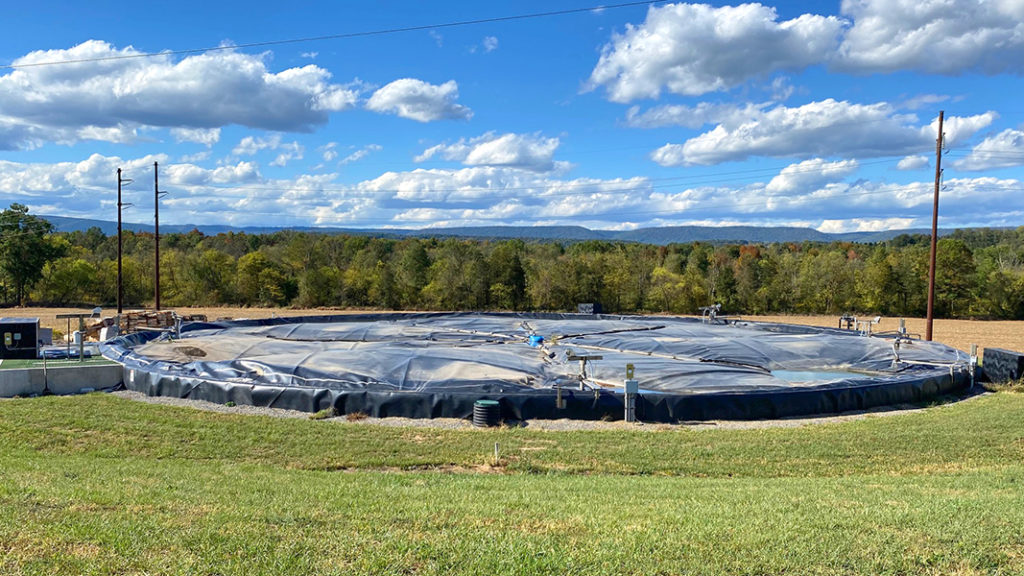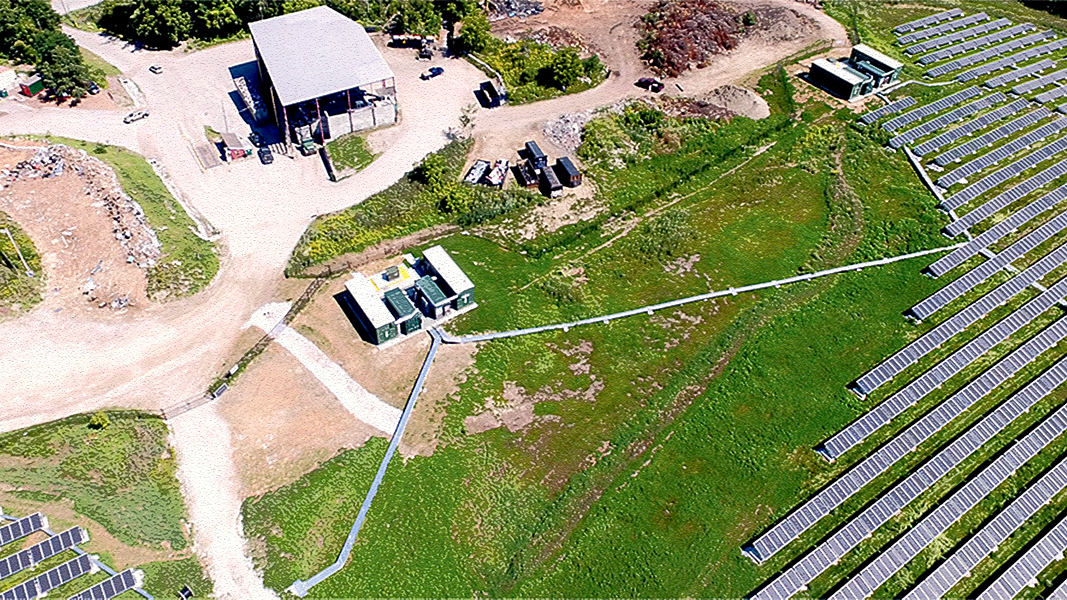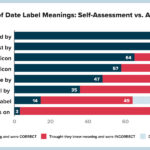Top: Photo courtesy of Green Mountain Power
Michael H. Levin
When the Obama Environmental Protection Agency (EPA) issued its Clean Power Plan (CPP) to reduce carbon dioxide (CO2) emissions from existing electric power plants by over 30% (80 FR 64661, Oct. 23, 2015), BioCycle outlined the new revenue streams CPP promised for anaerobic digester (AD) and other renewable energy projects. These included the ability to sell emission reduction credits to fossil-fired generators facing CPP-driven requirements (Biogas And The Clean Power Plan, Jan. 2016; Is Nutrient Trading Poised For A Surge?, June 2016; AD Prospects — Not As Bad As You Hear, May 1, 2017). When the Trump EPA revoked CPP and sought to replace it with a weaker Affordable Clean Energy Rule (ACE) (84 FR 32531, July 8, 2019), BioCycle highlighted that Rule’s questionable reasoning and potential adverse effects, cautioning ACE proponents should “be careful what you wish for.”
On the Trump Administration’s last full day that caution came home to roost: a Panel of the U.S. Court of Appeals for the D.C. Circuit overturned ACE in a crushing opinion, holding ACE was “just wrong” (Am. Lung Assn et al v. EPA, Jan. 19, 2021). “The question,” it declared, “is whether the EPA acted lawfully [under the Clean Air Act (CAA)] in adopting ACE as a means of regulating power plants’ emissions of greenhouse gases [GHGs]. It did not.” In a 130-page opinion the Panel majority demolished each “regulatory overreach” argument advanced to support ACE. Indeed, much of the opinion reads as though the majority was reviewing and affirming the CPP.

Anaerobic digesters stand to benefit from a resurrected Clean Power Plan. Photo courtesy of Reinford Farms
Elements Of ACE Court Ruling
BSER. Both CPP and ACE turned on the “Best System of [CO2] Emission Reduction” that states would apply to their existing power plants. CPP adopted a broad BSER “system” definition that included power generation shifting between coal, gas and renewable electricity units, as well as emissions trading across most emissions-avoiding sources. ACE applied only to coal-fired generating units, ignoring oil, renewables and natural gas. It limited BSER to measures applied “at and to” each individual coal-fired unit — incremental heat-rate efficiency steps the Trump EPA admitted could at best produce less than 1% reductions from those units nationwide. It disallowed reductions from biomass life cycles, state-level emissions trading approaches, or grid-wide dispatch measures, since those reductions were produced “outside the source.”
ACE’s BSER definition was no accident. The Trump EPA was going for broke in an effort to preclude more robust CO2 reduction rules in the future. It insisted it had no choice but to repeal the CPP and adopt its “at the source” BSER because the CAA “unambiguously compels this interpretation” and the agency lacked discretion to decide otherwise. If this EPA stance had prevailed, CPP-type BSER interpretations might have been legally foreclosed.
Majority opinion: The Panel majority both exploded EPA’s justifications and hoisted EPA on its own petard. It stated that whatever BSER definition the agency validly might have adopted, where EPA disclaimed discretion and declared itself “bound by the statute,” its erroneous statutory interpretation was fatal. It reviewed the CAA’s text, legislative history, EPA’s 50-year BSER record, Congress’ tacit assent to those readings, the meaningless nature of BSER heat-rate measures in which ACE set no actual numeric limits to guide states, and the “unreality of ignoring dispatch methods long used by the grid,” concluding ACE forfeited judicial respect because:
“. . .the [Act] does not, as the EPA claims, constrain the Agency to identifying a BSER consisting only of controls ‘that can be applied at and to a stationary source.’ EPA here ‘based its decision on an erroneous view of the law.’ [It] rewrites rather than reads the plain statutory text. A best system ‘for’ a source might [well] entail a broader array of controls that concern but are not immediately physically proximate to the source — such as, for instance, generation shifting. The EPA’s new [BSER] reading would atrophy the [pollution control] muscle that Congress deliberately built up to curb a pollutant that the Agency itself has repeatedly deemed a grave danger to health and welfare but that eludes control under other provisions of the Act.
“We accordingly must vacate and remand to the Agency ‘to interpret the statutory language anew.’”
“Major question” defense. The Supreme Court occasionally has said that sudden surprising ‘major expansions’ of regulatory authority must be justified by a “clear Congressional statement.” (E.g., UARG v. EPA, 134 S. Ct. 2427 (2014)). The Trump EPA raised this ‘major expansion’ shield, asserting a CPP-type BSER would have caused billions of dollars of adverse economic impact and negatively affected every electricity user.
Majority opinion: The Panel majority trashed this argument. It found abundant ‘clear statements’ because “each critical element of the Agency’s regulatory authority on this very subject [of greenhouse gas emissions] has long been recognized by Congress and judicial precedent.” Indeed, it noted, EPA not only had authority to regulate GHGs but was mandated to do so when the agency found GHGs endangered public health and welfare — their emission by existing power plants “falls squarely within EPA’s wheelhouse” and specifically was delegated by Congress to EPA. Moreover, the majority added, BSER was neither sudden nor unlimited. Since 1970, Congress had “carefully cabined” EPA by requiring it to consider cost, non-air quality impacts, and energy effects when determining BSER. Besides, it continued, under the CAA, BSER is a “guideline” which does not “regulate” anything — states determine BSER limits for their pertinent sources and may adopt any measures with equivalent reduction effects.
The Panel concluded that because power plants “have been subject to [CAA] regulation for nearly half a century” and “their emission of massive amounts of CO2 has long been known,” EPA “made no new discovery of regulatory power with the CPP.” Rather, “the source of EPA’s duty to regulate GHG pollution from power plants was the plain statutory text and Supreme Court precedent, not something EPA pulled out of a hat.” Large CPP-type economic impacts merely reflected ubiquitous utility emissions: “Those consequences are a product of the GHG problem, not of the best system’s role in the solution.”
States’ rights. EPA claimed a broader BSER would trample on federalism and state authority by regulating the electric grid, states’ energy mix, and consumers’ energy use.
Majority opinion: The panel shredded these claims, finding that “Interstate air pollution is not an area of traditional state regulation”; state sovereignty does “not bar the U.S. government from addressing areas of federal concern just because its actions have incidental effects on areas of state power”; and “the CPP directly regulated only the amount of GHGs that may be emitted. . . an area of unique federal concern.”
HAPs preclusion. Coal plants said EPA could not regulate their GHGs at all because their mercury emissions already were regulated as Hazardous Air Pollutants (HAPs) under another CAA provision. The issue here was whether a specific regulated HAP or the whole source category emitting it is excluded from further CAA regulation.
Majority opinion: The Panel validated GHG regulation in light of the CAA’s “gap filling intent” to assure no harmful emissions go unregulated. It turned “major question” precedents against the coal plants, noting that for them to prevail there would have to be a clear Congressional statement excluding such existing-source emissions. Since nothing in the Act or legislative history “said anything about changing the EPA’s affirmative regulatory obligation to promulgate emissions guidelines for all air pollutants except those already regulated under [Ambient Air Quality Standards] or [the HAPs program],” the Panel concluded EPA could “regulate CO2 emissions from power plants, even though mercury emitted from those plants is regulated as a HAP.”
Compliance times. ACE summarily extended by several years the general “implementation schedule” by which affected states must submit any BSER-compliant state plan or EPA must issue a protective federal plan — for any source category, not just power plant GHG reductions. The previous deadlines had been in place since 1975 and applied to all newly designated harmful pollutants, recognizing the need for gap-filling health protection in such situations.
Majority opinion: The Panel vacated ACE’s new deadlines, noting EPA’s “tepid justifications” and the importance of rapid GHG reductions: “from the rule’s explanation of the deadline extensions, one would have no idea EPA actually recognized that GHG pollution was causing a global climate crisis requiring urgent remediation.”
What’s Next?
As EPA Administrator-designate Michael Regan noted at his February 3 Senate confirmation hearing, the majority decision leaves the Biden EPA a clear field to proceed with new CPP-type power plant GHG rules — a significant result by itself, given America rejoining the 2015 Paris Accords and the CPP’s lead role in the first U.S. Paris commitment. However, the majority decision may do more than that. ACE said the Trump EPA would have revoked the CPP even if not replacing it. But that statement rested on the narrow BSER interpretation the Panel struck down. In general, an agency cannot unilaterally bind its successor. Legal principles also suggest that complete vacatur of a “replacement” rule should reinstate the previous rule where public health considerations are paramount. The majority’s vacatur of ACE’s looser implementation deadlines is indicative: it cannot have meant that no deadlines at all now apply. Similarly, prior CPP deadlines for state BSER plans (shifted forward from 2015) may be triggered by operation of law when the Court enters its mandate or if EPA reaffirms the CPP.
This does not mean a Biden EPA may not seek to strengthen the CPP. To cite only two ‘strengthening’ reasons, the CPP’s interim reductions already may have been attained through COVID effects and market-driven coal plant closures. And given accelerated global warming plus rapid growth in renewables since 2015, continuing to encourage shifts to natural gas may no longer be an attractive “bridge to a low-carbon future.” Nevertheless, even if major new rulemaking is required, a Biden Administration might swiftly readopt the CPP as a starting point. That approach could give it powerful leverage in pursuing CPP ‘amendments.’
Indeed, EPA recognized all these possibilities when it filed a February 12 “Motion for Partial Stay of Issuance of the Court’s Mandate,” asking the Panel to suspend its vacatur just of ACE’s CPP repeal portion “to avoid possible regulatory confusion” from long-past CPP deadlines springing to life again, noting the majority’s directive that the agency “consider [BSER] afresh.”
On the other hand, more litigation may loom. Though it concurred with parts of the majority opinion, there was a Panel dissent that provides some ground for potential rehearing or review by a newly conservative Supreme Court. The Panel majority apparently sought to reduce those possibilities. But it could not eliminate them.
Mike Levin, a BioCycle Contributing Editor, is managing member of the virtual law firm Michael H. Levin Law Group, PLLC (Washington DC) and a principal in NLGC LLC and Solar Shield LLC, which respectively focus on capital formation for renewable energy projects and optimization/development of roof-top PV systems in the District of Columbia. From 1979-1988 he was National Regulatory Reform Director at the U.S. EPA. Some quotations in this article have been compressed and reorganized for brevity.













